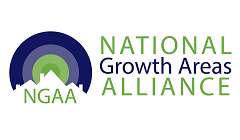City of Melton
About the profile areas
The 2023 Estimated Resident Population for City of Melton is 206,070, with a population density of 390.8 persons per square km.
Location and boundaries
The City of Melton is located in the outer western fringe of metropolitan Melbourne, about 40 kilometres west of the Melbourne CBD. The City of Melton is bounded by Macedon Ranges Shire in the north, Hume City and the City of Brimbank in the east, the City of Wyndham in the south, and Moorabool Shire in the west.
Traditional Owners
The original inhabitants of the City of Melton were the Wurundjeri Aboriginal people.
Name origin
The City of Melton is named after Melton Mowbray, an English town renowned for its fox hunting and coursing.
Important
|
Population206,070 2023 ABS ERP |
Land area527.3 square km |
Population density390.8 persons per square km |
Settlement history
European settlement dates from the late 1830s when the township of Melton was established, functioning as a rural service centre for the surrounding districts. Land was used mainly for grazing and farming. Growth was minimal until the 1850s, spurred by the gold rush. Expansion took place from the 1890s into the early 1900s, aided by the construction of the railway line and the development of the Melton Reservoir. Residential development was not significant until the 1970s, when the town was identified as a centre for Melbourne's population growth in the west and reticulated water was supplied. Rapid growth took place during the 1970s and 1980s, particularly in and around the township. Up until the late 1980s, Melton township was the only major population centre in the City, although small townships were located at Diggers Rest, Rockbank and Toolern Vale. Significant residential development occurred in the east from the mid 1990s, resulting in the establishment of new suburbs such as Burnside, Caroline Springs and Hillside, and later Taylors Hill. Rapid growth took place from the 1990s, with population increase expected to continue.
population of the City trebled between 1991 and 2011, rising from 35,000 in 1991 to nearly 109,000 in 2011, with the most rapid development between 2001 and 2011. Population increase is expected to continue.Land use
The City of Melton is a rapidly developing area, with both urban and rural areas. The City encompasses a total land area of 527 square kilometres. The City of Melton includes the main urban centre of Melton, the growing western suburban spread of Melbourne in the Caroline Springs/Hillside area, and several smaller townships, including Diggers Rest, Rockbank and Toolern Vale. Melton is an important area for horse breeding.
Transport
The City of Melton is served by the Calder Freeway, the Western Freeway, the Melton Highway, the Western Highway, and the Melbourne-Ballarat, Melton and Sydenham railway lines.
Major features
- Major features of the City of Melton include the Melton Town Centre,
- Woodgrove Shopping Centre,
- Melton Reservoir,
- Tabcorp Park,
- Melton Waves Leisure Centre,
- Eynesbury Golf Club,
- Melton Valley Golf Club,
- Melton Indoor Sports Stadium,
- Melton Botanic Garden,
- The Willows Historical Park,
- Dingo Discovery and Research Centre,
- Dame Phyllis Frost Centre (Women's Prison),
- Metropolitan Remand Centre and various wineries.
Included areas
- The City of Melton includes the suburbs and localities of Aintree,
- Bonnie Brook,
- Brookfield,
- Burnside,
- Burnside Heights,
- Caroline Springs,
- Cobblebank,
- Deanside,
- Diggers Rest (part),
- Exford,
- Eynesbury (part),
- Fieldstone,
- Fraser Rise,
- Grangefields,
- Harkness,
- Hillside (part),
- Kurunjang,
- Melton,
- Melton South,
- Melton West,
- Mount Cottrell (part),
- Parwan (part),
- Plumpton,
- Ravenhall,
- Rockbank,
- Strathtulloh,
- Taylors Hill,
- Thornhill Park,
- Toolern Vale (part),
- Truganina (part) and Weir Views.
